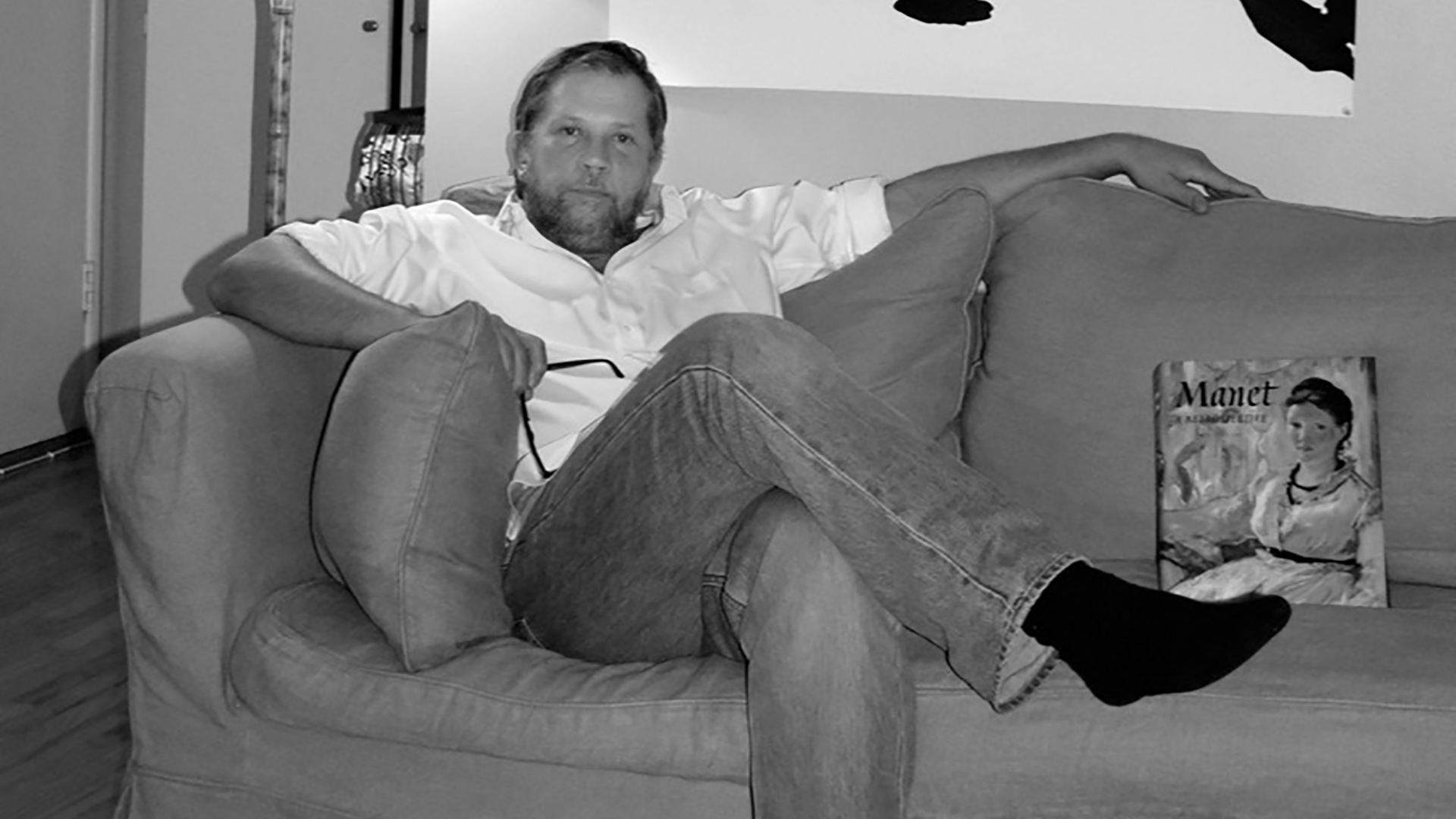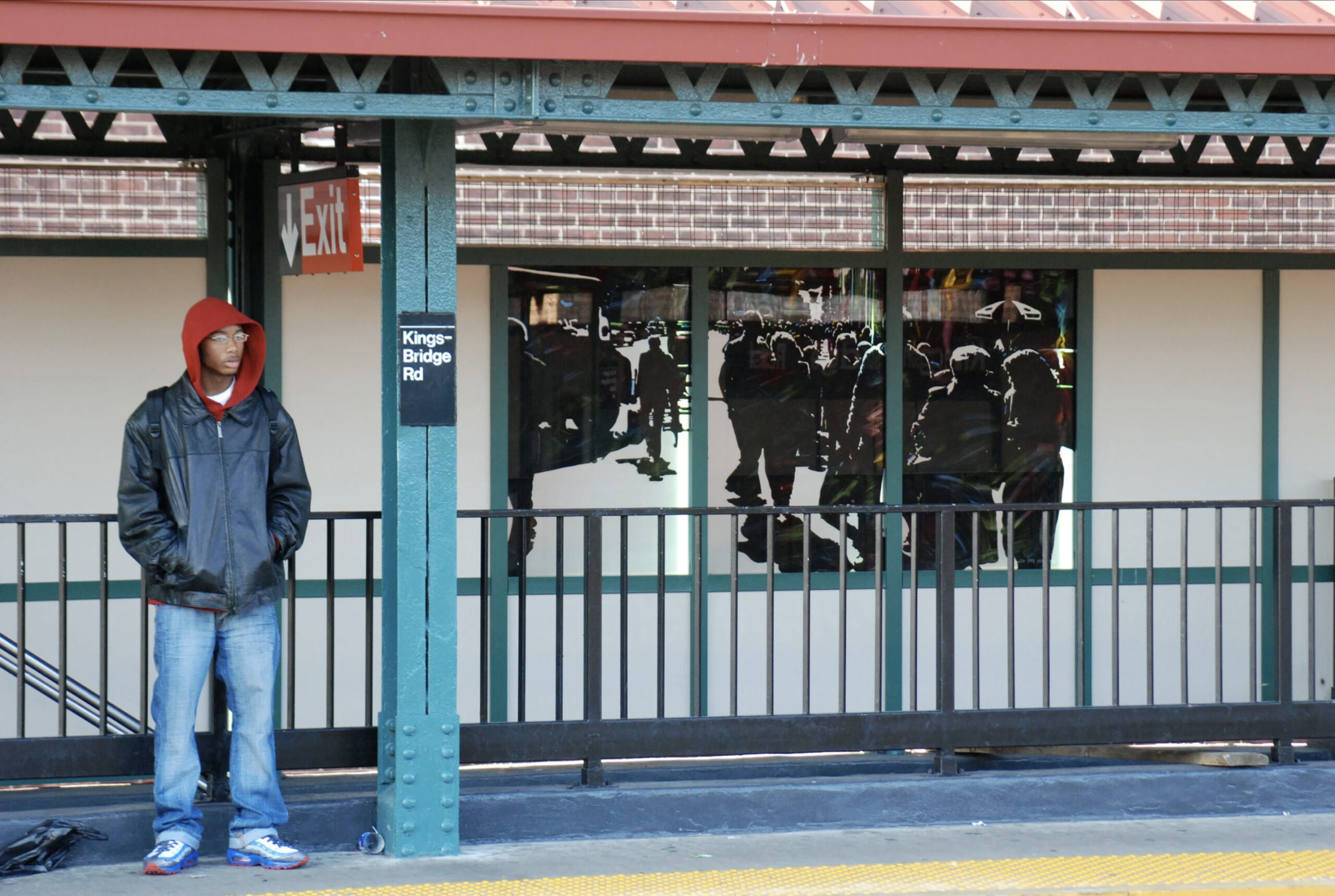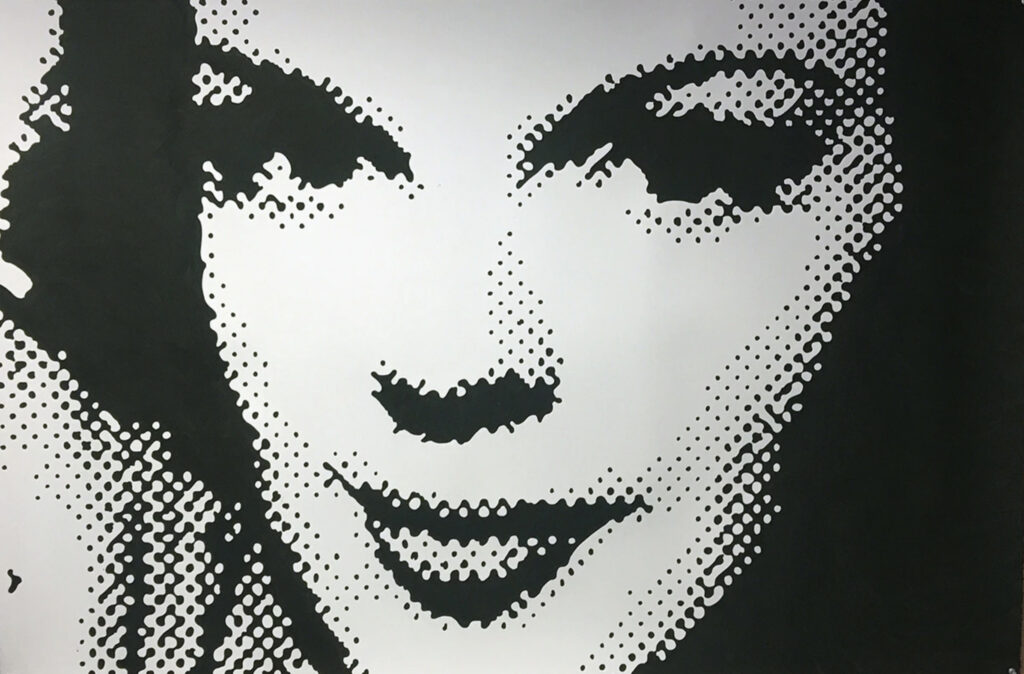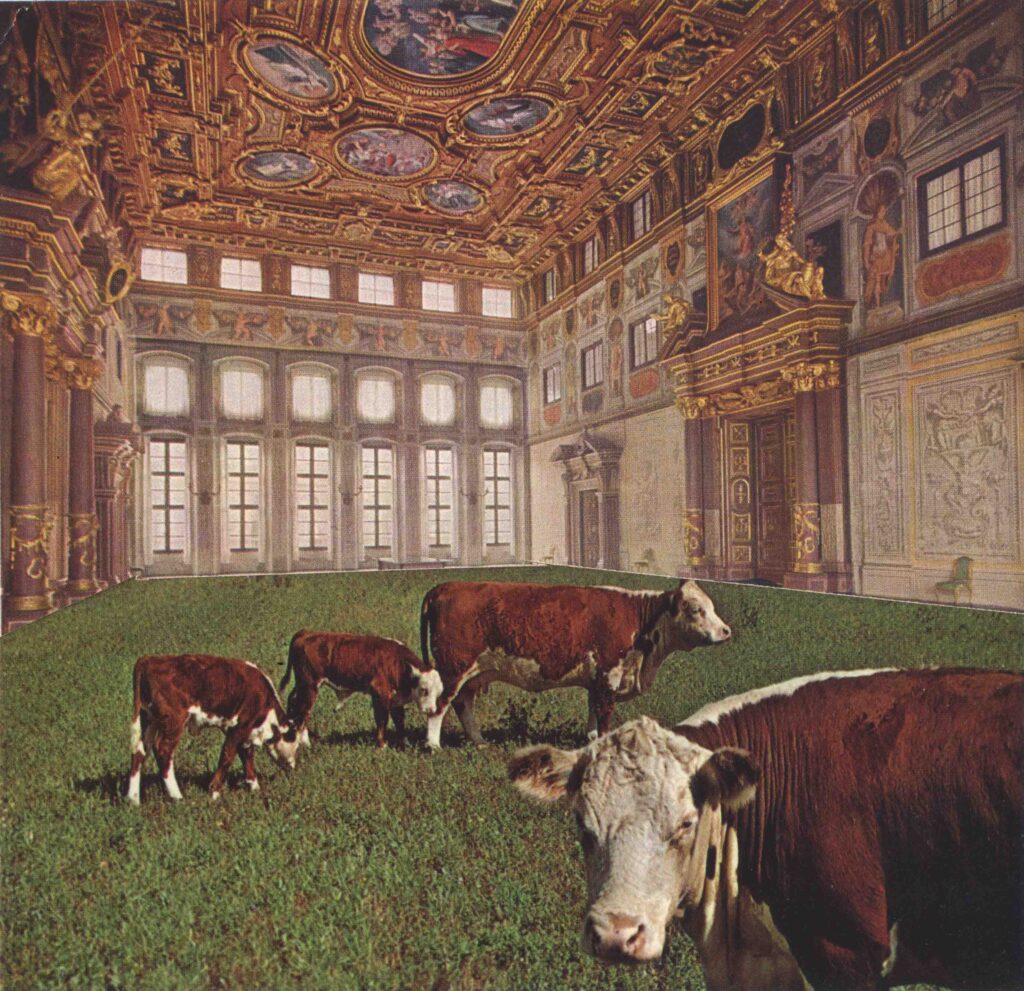
HOW DID YOUR EXPERIENCE AT RIVERDALE IMPACT YOU? WHAT WAS MEMORABLE ABOUT YOUR TIME AT RCS?
I had nothing but delightful experiences. I arrived at Riverdale in the 10th grade from Allen Stevenson, an all-boys school with jackets and ties. The co-ed landscape alone left me like a happy deer in headlights.
I was big into theater at Riverdale. I mounted two student productions as a junior and as a senior. Mark Andrew ’80 and I made a 45-minute film in Super-8 and premiered it on the stage on a Wednesday morning. It was some spoof of a James Bond spy caper. We performed the soundtrack live because we didn’t have an audio track on Super 8. It was performance art!”
The faculty was inspired and passionate. Gaylord Flory was a force to be reckoned with and easily antagonized. He just didn’t suffer fools easily. Satish Joshi became a real friend, mentor, and role model. My mother passed away when I was a sophomore at Northwestern. The summer before I returned to school I carved a series of alabaster sculptures with Satish on the river campus.
Dr. Evelyn Flory also encouraged me. I was a poor reader because of dyslexia (then undiagnosed). She introduced me to the concept of listening to Shakespeare with recordings. This simple change made a world of difference that I benefit from to this day.
WHAT MADE YOU PURSUE A CAREER AS AN ARTIST? WAS THERE A PARTICULAR MOMENT WHEN YOU KNEW THIS WAS WHAT YOU WANTED TO DO?
I am an artist because I love art. I am the most enthusiastic visual consumer of art you will ever meet. It has moved me, it has transformed me, it has helped and comforted me. It has given me great pleasure throughout my life. Art has also infuriated and aggravated me, but regardless, art just plays this incredible role.
You know the old chestnut, “Think outside of the box”… I was never in the box. That caused some consternation with my teachers over the years, but the professors who saw my core creativity immediately locked in on it and gave me encouragement.
I have to give credit to my quixotic mother. She gave me a cultural base of understanding and exposure that was extraordinary. We lived on the Upper East Side and I was a latch-key kid before the term was coined. Each year she gave me memberships to the Metropolitan, the Guggenheim, the Whitney, and the Frick.
I could go anytime I wanted. I always had a home base at museums, and not everybody had that.

12 LAMINATED, HAND PAINTED AND SANDBLASTED GLASS PANELS
PERMANENTLY INSTALLED
KINGSBRIDGE ROAD SUBWAY STATION, BRONX NY
YOUR ARTWORK COVERS A WIDE RANGE OF SUBJECTS, FROM COLLAGED POSTCARDS TO HOLLYWOOD ACTRESSES FROM THE 1930S TO THE 1960S: WHAT ARE THE GUIDING ARTISTIC THEMES THROUGHOUT YOUR WORK?

UNIQUE HAND PAINTED INDIA INK ON PAPER
The red thread that binds all my motifs over 40 years is probably an element of light — a description of how light allows us to see things. Very early on, the images that made my career and visual identity were of shadows and silhouettes and the bright sun creating these forms. They overlap, reinvent, and surprise continuously.
The GoWithTheFlo collaged postcards always make me smile. They’re like some time-released aesthetic ignition. Some are more overt than others but each has a sense of satisfactory epiphany. Delivering the unexpected is their primary purpose.
In the Hollywood Women collection, I use a halftone methodology to present the women as sort of idealized versions of theatricality and glamor. The dots of the halftone screen are meticulously handpainted, taking a mechanical process and executing it manually. The large-scale renditions (30 x 40 inches) are especially magical. Sometimes the small-scale pieces arrive heroic and sometimes the large ones appear intimate.
Those aforementioned depictions of urban pedestrians are at the forefront of the site-specific commission, UrbanMotif from the MTA Arts for Transit program. In 2007, I installed 12 glass windscreen panels for a subway station in the Bronx, Kingsbridge Road. Each panel is laminated, hand-painted, and sandblasted layers of glass. There’s a black and white grit and gray layer, a color layer, and then a sandblasted layer. It’s permanent, and to be able to say that my work is part of the NYC landscape in which I grew up is incredibly moving.
I know my Mother would be incredibly proud.
YOU FOUNDED THE WEEKLY ZOOM ART SALON AESTHETIC ARREST DURING COVID-19. CAN YOU SHARE WHAT AESTHETIC ARREST MEANS TO YOU AND WHAT INSPIRED YOU TO ORGANIZE THESE GATHERINGS?
Karen Waddell ’80 and I have maintained a lifelong friendship. During the pandemic, we would call each other on Fridays and debrief each of our weeks. This usually included some wonderful tangents about artists, galleries, museums, or art fairs.
After about 3-4 months of these Karen said, “You’re way too good at this. You’ve gotta do this for more people.” After some brainstorming and fine-tuning Aesthetic Arrest was born.” Aesthetic Arrest is a gathering of culturally curious, visually insatiable art lovers. The weekly sessions often concentrate on one or maybe two artists or on a particular curatorial theme.
The conversational presentations and resulting animated discussions usually last no longer than 35-45 minutes.
The term Aesthetic Arrest is the physicalization of awe — when you’re standing in front of something so beautiful that it makes the hair on the back of the neck stand up, chills and goosebumps, weak in the knees, and a little shortness of breath. I feel all of those when I see something extraordinary. That wonder can be triggered by a visual, but it also can be intellectual, it can be an inquiry, which then leads you to see the world in a different way.
The drive to seek out and share these moments of wonder is based on this fantastic quote by Robert Storr, the former chief curator at MoMA. He said, “Never trust taste without appetite.”

Sophistication and connoisseurship are useless if not accompanied by hunger for the new and surprising.
We currently have 165 people on the mailing list from all over both the country and the world. We have done 115 sessions (67 were dedicated to women artists!) in three years.
We have weekly enthusiasts from Hawaii to London.
WHAT ARE YOU CURRENTLY WORKING ON?
I serve as Artist in Residence to the Stephen Wise Temple here in Los Angeles. There are a multitude of projects that I do but perhaps none more satisfying than the assignment to design a new mezuzah for a new building going up on the Bel Air campus.
I’m completing a couple of books on my expanding productivity over the last decade. One series titled HalfFull, are India Ink Paintings of glasses half full. It’s basically about the discipline that it takes to remain optimistic in a sometimes disappointing world. That’s what I concentrated on during the COVID times. The End is a meditation on aging and Film Noir. 32 Questions for Carl Jung is an installation of drawings and paintings.
I prefer to sell directly to private and corporate patrons. Having exhibitions is exhausting. There are collectors who come to my studio and say, What’s your favorite piece? I always say it’s the piece I’m finishing next week or the piece I haven’t started yet.
Mario M. Muller ’80 is a Fine Artist based in Los Angeles. A native New Yorker, he has mounted 23 solo exhibitions in Europe and the US in 30 years. He holds a degree from Northwestern University in Film and Fine Art and partook in prestigious master classes with Ed Paschke, Roy Lichtenstein, Audrey Flack, James Brooks, and Wayne Theibaud. In addition to his prolific art career, Muller has published over 100 articles on art and film criticism.
The Fine Art Mothership: mariomuller.com
The Instagram: @truffleHunting